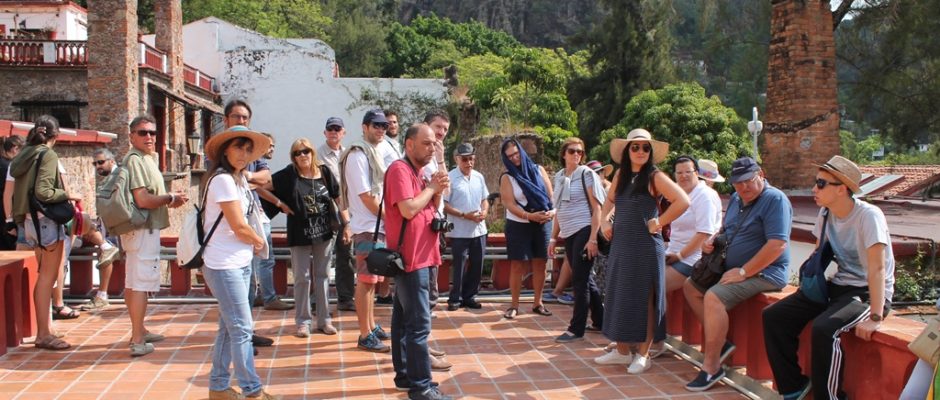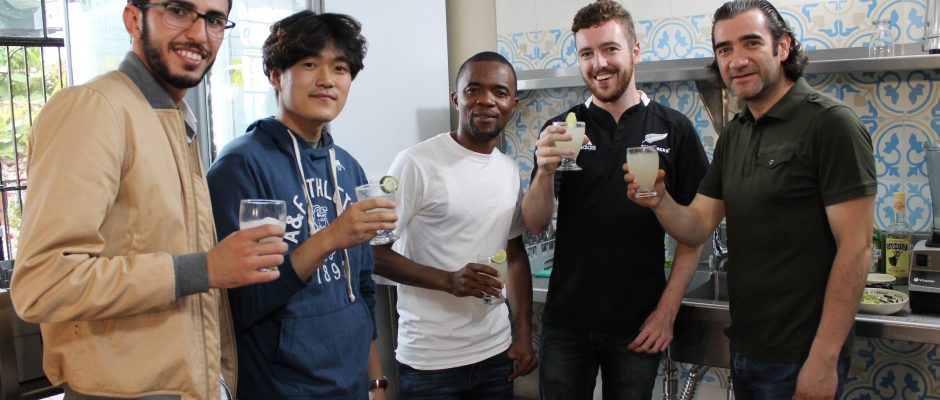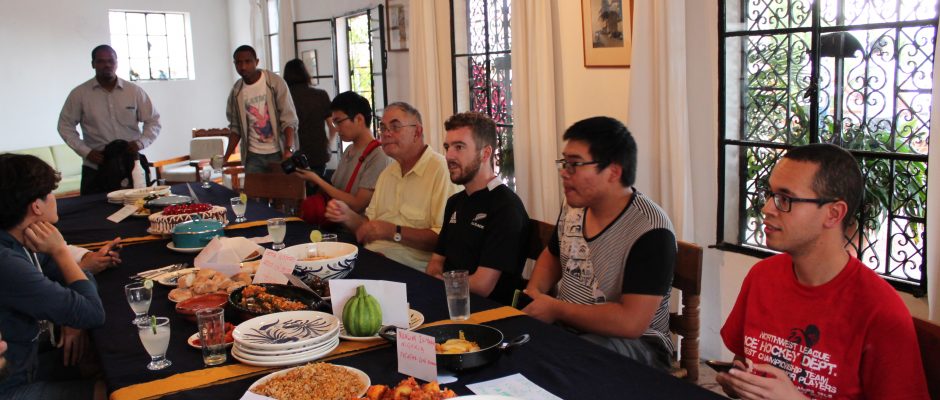Intensive Immersion Spanish Language & Mexican Culture Courses
Join UNAM Study Abroad Program
Tailored & customized courses. Year-round registration
We offer 9 language levels (A1 to C1) focused on learning and gradual mastery of Spanish language. Each level integrates complementary courses that reinforce communication skills (oral expression, writing, listening & reading comprehension).
The Mexican culture courses, depending on the level, include drama, history, geography, Hispanic literature, cultural diversity, gastronomy, and art.
Normally, the duration of our courses is six weeks, which corresponds to six periods throughout the year: winter, spring 1 and 2, summer, autumn 1 and 2. However, we offer tailor-made courses to support your needs.
CEPE Taxco has the advantage to adapt to different arrival times and length of stay for students, who may take introductory courses or have face-to-face consulting.
-
Language class to learn Spanish by practicing the four linguistic skills: listening and reading comprehension, oral and written expression, with special attention to teaching the language for communication. It may include a complementary class to strength any linguistic skill, plus one Mexican culture class.
Aimed at:
Duration:
Location:
Starting dates:
Study format:
Language:
Total hours:
Total cost: All foreigners and non-Spanish speakers (+ 18 years old).
Open (1 to 8 weeks)
UNAM Satellite campus (Ex Hacienda El Chorrillo,Taxco, Gro. Mexico) and external venues, and different cultural sites.
Year-round and on request
Landmark campus, classroom, and fieldwork sessions (Tentacular format)
All levels (A1-C1)
20 per week (Average)
On request -
2 weeks
➢ 20 hours of Spanish
➢ 10 hours of Mexican Culture
➢ City Tour
➢ 1 Latin dance masterclass
➢ 1 Environment workshop (focused on local flora and fauna)
➢ 1 workshop to choose: silver craft, basketry, cardboard making, Mexican cuisine, clay/pottery)
➢ 1 visit to a historical site3 weeks
➢ 30 hours of Spanish
➢ 15 hours of Mexican Culture
➢ City Tour
➢ 1 Latin dance masterclass
➢ 1 Environment workshop (focused on local flora and fauna)
➢ 2 workshop to choose: silver craft, basketry, cardboard making, Mexican cuisine, clay/pottery, mixology (mocktails & cocktails)
➢ 2 visits to historical sites4 weeks
➢ 40 hours of Spanish
➢ 20 hours of Mexican Culture
➢ City Tour
➢ 1 Latin dance masterclass
➢ 1 Environment workshop (focused on local flora and fauna)
➢ 3 workshop to choose: silver craft, basketry, cardboard making, Mexican cuisine, clay/pottery, mixology (mocktails & cocktails)
➢ 3 visits to historical sites -
2 weeks $ 475.00 USD3 weeks $ 590.00 USD4 weeks $ 725.00 USD
We have affordable prices that have been established by the institution, with special rates under a previous agreement. Contac us and ask for custom-made courses.
Services with additional cost:
● Round transportation: Mexico City Airport-Taxco / Taxco-Mexico City Airport
Cost: $ 150 USD● Full accommodation in CEPE Taxco School Housing (shared rooms). Casa Robin
Cost: $ 135 USD (per week) -
The CEPE-UNAM campus in Taxco is located in an architectural complex which is part of the country’s historical and cultural heritage: The Ex Hacienda El Chorrillo. It’s a unique place full of history and surrounded by lush vegetation within an enchanted Mexican town.
It was the first mining site in Latin America, ordered to be built by Hernán Cortés in the 16th century. For more than 400 years, the process of separating silver ore was done using water as a driving force. In the beginning of the 20th century, it is said that the Hacienda was raided by Emiliano Zapata’s troops.
Afterwards, the Hacienda was abandoned and it had different owners until the 1940s when it was acquired by the Sullivans, an American couple who conserved many of the original structures, and used to build small houses to be offered as an exclusive tourist service for distinguished visitors and friends. It is thought that one of the Kennedy brothers and Marilyn Monroe were some of the famous guests.
Later, in 1992, the Ex-Hacienda was loaned to UNAM to establish an alternative location for CEPE and strengthen the academic and educational project of international outreach. Recently, between 2020 and 2021 seven new classrooms were built in order to modernize the facilities dedicated to teaching, consistent with UNAM’s demand for academic quality of the highest world class standards, whether it be in person, online, or blended learning.
<
-
Taxco is located in the State of Guerrero, 180 km (2 hours) from the south of Mexico City and adjacent to the State of Morelos. Its natural surroundings are mountainous with a warm climate (14°-32°C) with rain during the summer. It is a typical Mexican colonial town that began as a mining settlement, the reason why today it is recognized for its handcrafted silver jewelry businesses.
Taxco’s baroque religious architecture is highlighted with Santa Prisca Church, as well as its picturesque white colonial houses with red tile roofs and black ironwork. Taxco’s main square is the heart of social and economic life, which is surrounded by streets, alleys, stairways, and upward and downward slopes which lead to smaller plazas; this entire urban environment is covered in cobblestone streets, adorned with white marble that stands out in contrast.
Since it is a small tourist city, everything is within walking distance, but there is also public transportation: vans and taxis, most of which are VW Beetles. Its main market is a maze that is worth getting lost in. There are street stalls, supermarkets, banks and ATMs, restaurants, cafés, bars, hotels, laundromats, drugstores, and a hospital close to CEPE.
Taxco has many cultural traditions; for example, regional cuisine, whose dishes such as pozole and “jumiles” (stink bugs, small edible insects) are widely popular with the locals.




